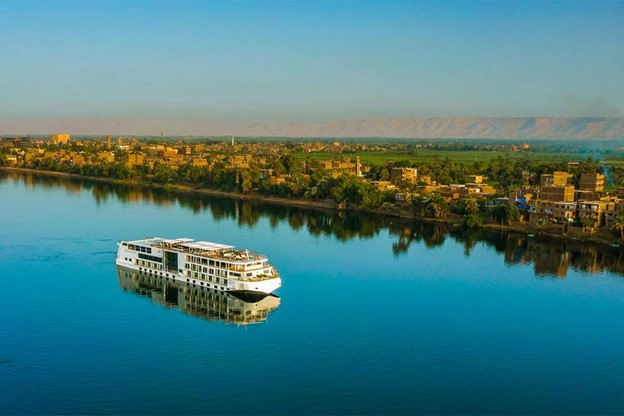A journey along the River Nile is more than just a holiday; it’s an odyssey through the cradle of civilisation, a living museum where ancient history unfolds before your eyes. Picture yourself gliding on the tranquil waters, the desert sun warming your face, as monumental temples and age-old tombs emerge from the riverbanks. This isn’t just travel; it’s a profound connection to a bygone era. For those seeking a truly immersive experience, a Nile Cruises itinerary offers the perfect blend of relaxation, education, and awe-inspiring sights. You’ll not only see Egypt’s wonders but feel their enduring spirit.
Table of Contents
The Epicentre of Ancient Power: Luxor
The city of Luxor, often called the world’s largest open-air museum, is where most Nile cruises begin or end. This city, built on the site of ancient Thebes, was the capital of Egypt during its New Kingdom period—the golden age of pharaohs like Tutankhamun and Ramses II. Your time here will be filled with monumental sights that reveal the incredible power and artistry of this era.
Karnak and Luxor Temples: A Grand Scale
The Karnak Temple Complex is not a single temple but a city of temples built over 2,000 years. Its sheer scale is staggering. As you walk through the Great Hypostyle Hall, with its 134 colossal columns, you’ll feel dwarfed by the immense architecture. Each pillar and wall is a canvas of hieroglyphs and reliefs depicting the triumphs of pharaohs and the worship of gods.
Just a short distance away, the Luxor Temple is equally impressive, especially when illuminated at night. It’s a testament to the seamless integration of history, where a mosque sits atop a pylon and Roman murals coexist with Egyptian carvings. A walk down the Avenue of Sphinxes connecting the two temples is a walk through history itself, a path once used for grand processions.
The West Bank: City of the Dead
Crossing to the West Bank of the Nile takes you to the necropolis of Thebes. This is where the pharaohs and their queens were laid to rest, in a stark contrast to the lively East Bank.
- Valley of the Kings: This is the ultimate highlight. The desert landscape hides over 60 rock-cut tombs, including that of Tutankhamun. While the treasures have been moved to the Egyptian Museum in Cairo, the vibrant paintings and intricate hieroglyphs inside the tombs remain, telling stories of the journey to the afterlife. A tip for visitors: purchase a multi-entry ticket to see more than the standard three tombs, as each tomb offers a unique artistic style.
- Temple of Hatshepsut: This unique funerary temple is a masterpiece of design. Built into the cliff face, its terraced structure honours one of the few female pharaohs of Egypt.
- Colossi of Memnon: These two massive stone statues of Pharaoh Amenhotep III stand sentinel in the fields, a poignant reminder of a once-great temple that has long since vanished. They make for a perfect photo opportunity at sunrise.
Sailing South: Edfu and Kom Ombo
As your cruise ship sails south, the landscape changes, and new temples await. The journey itself is part of the experience, offering stunning views of rural life along the river.
The Temple of Horus at Edfu
The Temple of Edfu is arguably the best-preserved temple in Egypt. Dedicated to the falcon god Horus, it was buried in sand for centuries, protecting it from the elements. The result is a stunningly complete structure with an intact roof, inner sanctuaries, and a perfectly preserved pylon. Exploring the temple feels like stepping back in time; the reliefs and carvings are so crisp you can almost hear the ancient priests performing their rituals.
The Double Temple of Kom Ombo
Further south, the Temple of Kom Ombo is unique for its dual dedication to two gods: the crocodile god Sobek and the falcon god Haroeris (Horus the Elder). This symmetrical design means the temple has two identical entrances, courts, and sanctuaries. The site is a fascinating study in ancient medical practices, with detailed carvings showing surgical tools and calendrical systems. It’s also famous for the crocodile mummies found on site, a testament to the worship of Sobek.
The Southernmost Jewel: Aswan
Aswan marks the end of most standard Nile Cruises and is a city of stunning natural beauty and rich history. Known for its granite quarries and proximity to Nubian culture, Aswan offers a different vibe from Luxor.
Philae Temple: The Island Sanctuary
The Philae Temple, dedicated to the goddess Isis, is a true marvel of engineering. When the Aswan High Dam was built, the temple complex was painstakingly relocated, stone by stone, to a higher island to save it from the rising waters. The boat trip to the temple, set against a backdrop of lush vegetation and granite boulders, is an experience in itself.
The Unfinished Obelisk and the Aswan High Dam
The Unfinished Obelisk in the ancient granite quarries gives a glimpse into the incredible process of monumental stonework. At over 130 feet long, it would have been the largest obelisk ever created, but a crack in the stone led to its abandonment. Seeing it still attached to the bedrock provides a fascinating insight into the tools and techniques of ancient Egyptian builders. Nearby, the modern Aswan High Dam stands as a testament to contemporary engineering, controlling the Nile’s flow and creating Lake Nasser.
Sailing on a Felucca
For a break from the major sites, take a ride on a felucca—a traditional wooden sailboat. These peaceful trips offer an authentic way to experience the Nile’s serene beauty, gliding past Elephantine Island and the Aga Khan Mausoleum. It’s a moment of tranquillity and a perfect way to appreciate the river that has been the lifeblood of Egypt for millennia.
A Lasting Impression
From the colossal grandeur of Luxor’s temples to the quiet beauty of Aswan’s riverbanks, a Nile cruise is an unparalleled journey. It’s an opportunity to immerse yourself in the stories, myths, and achievements of an extraordinary civilisation. The expert guides on these voyages bring history to life, transforming a landscape of stone and sand into a narrative of gods, pharaohs, and everyday people. By the time you disembark, you won’t just have seen incredible sights; you’ll have gained a deeper appreciation for the enduring legacy of ancient Egypt. For a journey that connects you to the heart of this timeless land, consider a Nile Cruises vacation.
If you’re ready to embark on your Egyptian adventure, learn more about what’s possible on a Nile cruise and other classic holiday destinations by visiting Classic Holidays.

